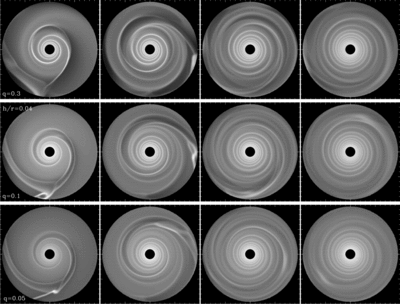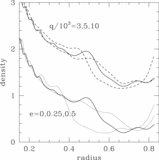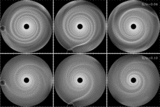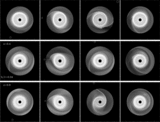Image Details

Caption: Fig. 8.
Effect of stellar mass on spiral structure excited by a recent stellar encounter. Simulations are shown at ﹩t=1/ 4,1/ 2,1,2﹩, and 4 times ﹩P_{\mathrm{outer}\,}﹩ (the rotation period at the disk outer edge) from left to right after a star of mass ratio ﹩q=0.3,0.1﹩, and 0.05 undergoes its closest approach to the central star. Each row corresponds to a simulation with a different mass ratio (simulations R, S, and T, respectively). The position of closest approach is half the radius of the disk outer edge, and the star is assumed to be on a parabolic trajectory. For these simulations, the disk Reynolds numbers ﹩\mathstrut{\cal R} =10^{6}﹩ and the disk aspect ratios ﹩h/ r=0.04﹩. If the perturber’s mass is below ~0.1 times that of the star, only one spiral arm is dominant. The short timescale of the excited spiral structure places a limit on the proximity of a perturber that could have been responsible for driving the spiral structure in the disk of HD 100546. As a guideline, the edge of the disk should be compared to the size of the disk of HD 100546, or ~300 AU.
Copyright and Terms & Conditions
© 2005. The American Astronomical Society. All rights reserved. Printed in U.S.A.












